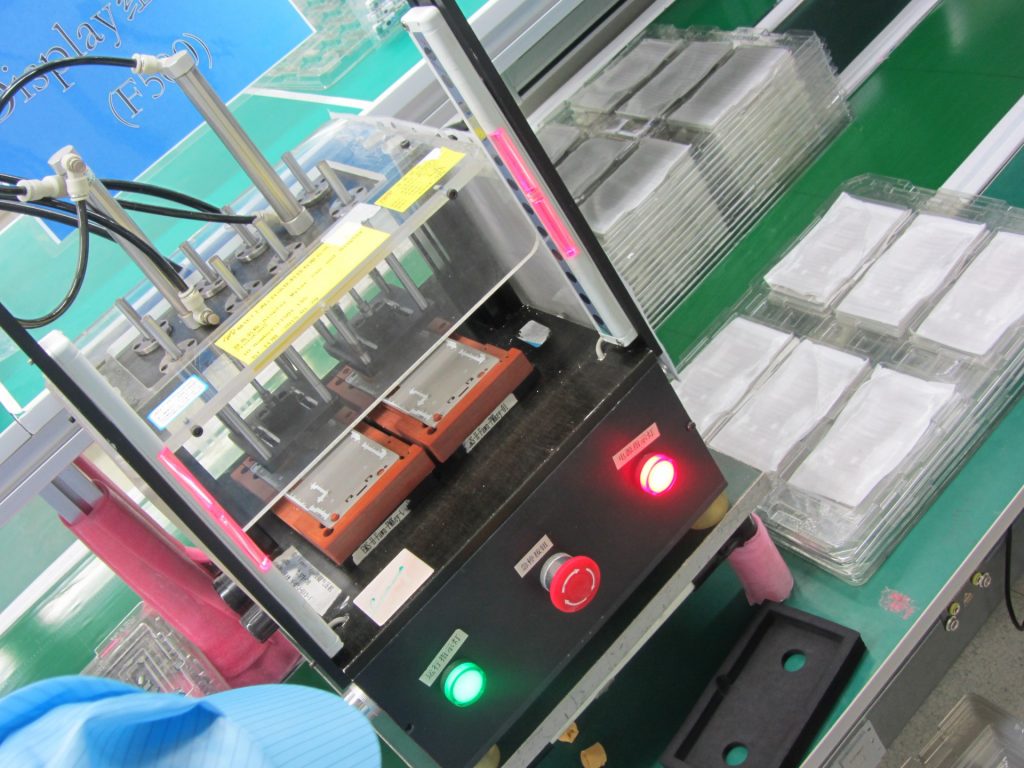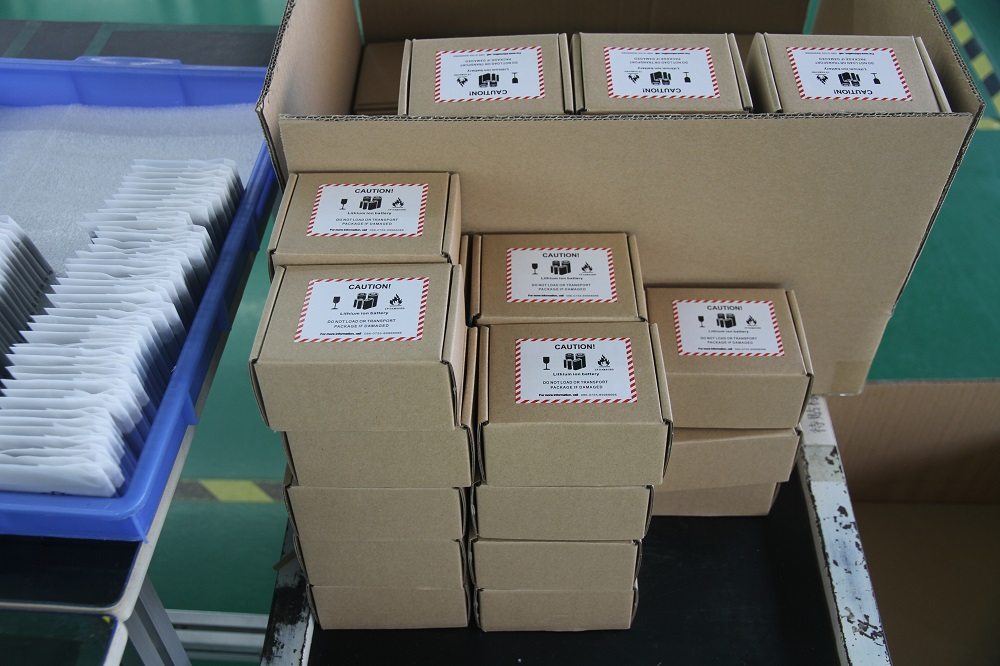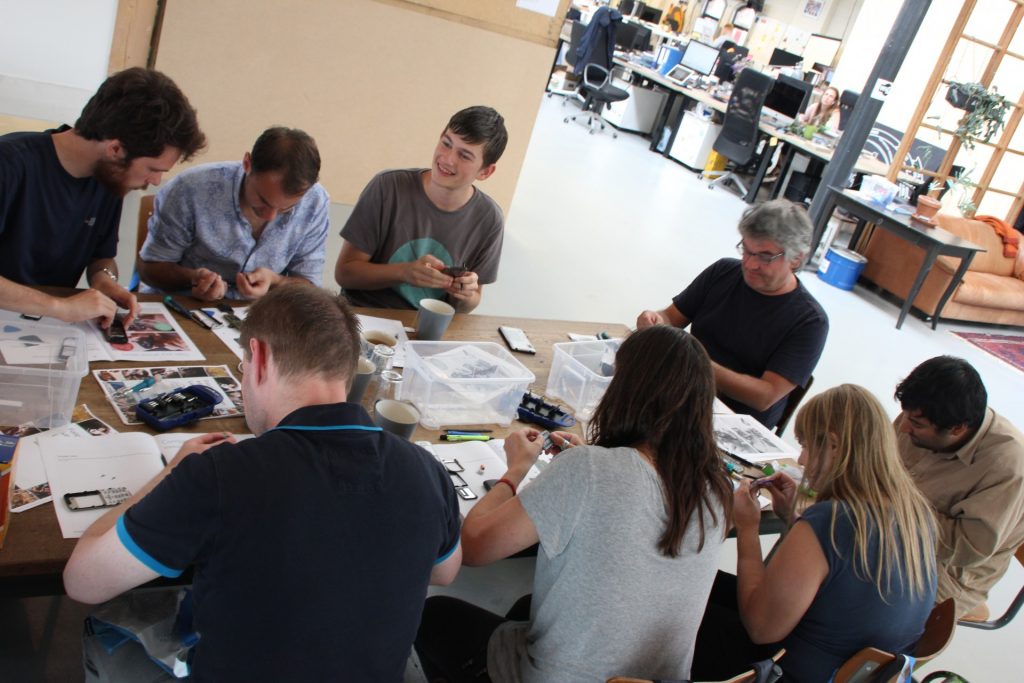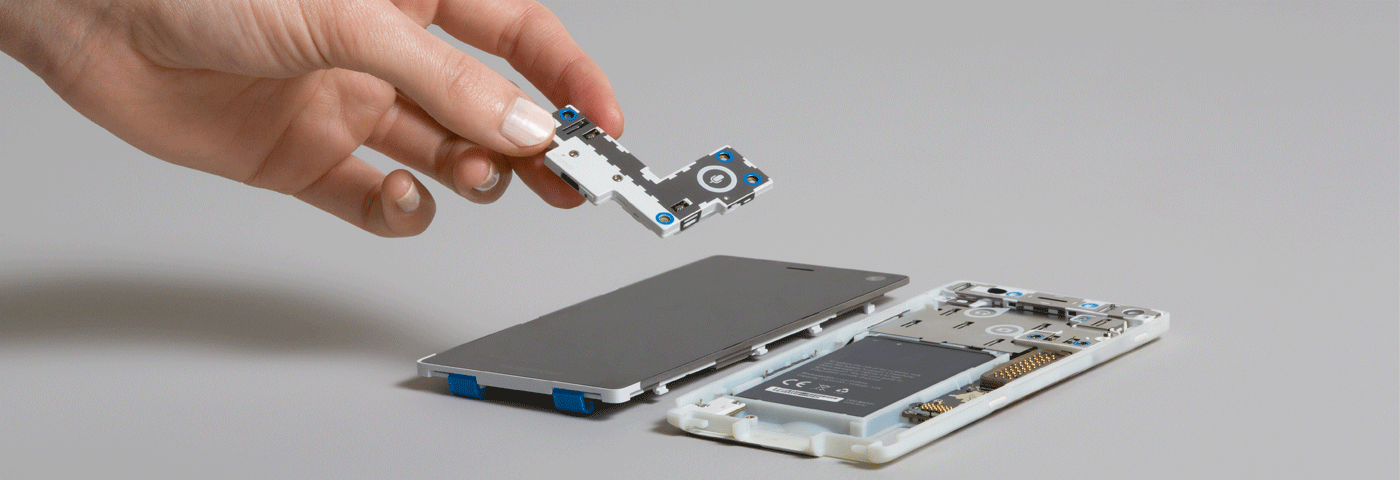A closer look at the spare parts supply chain
We recently shared the news that we need to stop supporting the Fairphone 1 — our first attempt at making a fairer smartphone. In his blog post, our founder and CEO Bas van Abel explained some of the reasons why we needed to make this hard decision, including the financial and supply-chain related challenges of trying to stock spare parts.
Since joining the company in 2016 as Fairphone’s operations director, I’ve been closely involved in our ongoing efforts related to spare parts. My role includes everything from overseeing production planning and logistics to coordinating after-sales support and repair centers.
While our last post mentioned some of the ways that we plan to overcome our spare parts challenges with the Fairphone 2, it didn’t go very in-depth. So in this post, I’d like to share some of my firsthand experience to give you a closer look at everything that goes into sourcing spare parts. Below, I’ve put together an overview of some of the most important topics in a question and answer format.
1) How does spare parts sourcing work?
At Fairphone, we need to keep spare parts in stock for a variety of reasons. For example, spare parts are sold in our online store for DIY repairs. But we also need them for in-warranty and out-of-warranty repairs performed at our repair center and by our partners.
The spare parts sourcing process works differently depending on whether or not the product is still being produced. While the product is in production, you prepare purchase orders to get these parts from the different suppliers. In electronics manufacturing, this process is generally managed by the manufacturing partner, and not the brand (like Fairphone). This was certainly true for the Fairphone 1 — because it was a licensed design, most of the component stock was managed by our supplier. Because we own the modular design of the Fairphone 2, we manage the stock and purchase orders of 7 subproducts (battery, back cover, the modules and the packaging). However,our manufacturing partner does the final sourcing and supply chain management for the hundreds of differents parts, materials and subassemblies that go into assembling the Fairphone 2 (and therefore the modules/spare parts).
When the product is no longer being manufactured, then the story changes a bit. At this point the brand may want to have a greater control over the supply of spare parts in order to be able to keep repairing their products.
2) What kinds of challenges do you face while building stock of spare parts?
To ensure a certain level of longevity for our products, Fairphone sometimes has to stockpile spare parts. To do this, you need to have enough working capital to be able to invest now in something that you need in the future. But at the same time, you also want to avoid buying too many spare parts — otherwise you run the risk of having a huge environmental footprint due to stocking products that will never be used.
To give a concrete example: Not so long ago, we learned that another large phone manufacturer stopped producing one of their models. Until that moment we had been able to leverage the buying power of this large player to help cover the supplier’s minimum order quantities for a specific component. But this change meant we would need to cover the minimum order quantities by ourselves. It therefore became impossible for us to keep ordering, as the excess parts would cause an enormous environmental footprint, plus create a huge financial burden for our small company.
Because of our aim to create longer-lasting devices, we regularly come across challenges like this. They force us to redesign, retest and re-qualify our parts (such as the battery or display), which is very time-consuming.
These challenges also often require us to search for alternative suppliers for these items, and keeps the sourcing, development and engineering teams at Fairphone and partners quite busy.

Fairphone 2 display modules on production
In addition, the fact that we are relatively new to the market makes it more challenging for us to future demand. Since the majority of components and parts are produced with long lead times, orders may need to be secured up to 6 months in advance. This means that any changes in our estimates for the coming 6 months will result in having too much, or too little stock when we need it to be available.
All in all, it is a complex puzzle that keeps an entire team busy. Rest assured, we are doing all we can to continuously improve!
3) How is spare parts sourcing different for the Fairphone 2?
Fairphone 2 is our own, custom design. Compared to the Fairphone 1, the replaceable modules in the Fairphone 2 offer even greater options for DIY repair and supplying spare parts.
While we still can’t guarantee that manufacturers will continue to supply the specific components we need for five years, in the event that a component is no longer available, modularity gives us room to modify the design to accommodate a different part. In the coming years we will also have more working capital available, thanks to increasing sales and new investments. That means that finances will play less of a role in our longevity decisions.
One of Fairphone goals is to produce phones that last as long as possible, and we have made significant progress in just four years of existence! We are showing that we can go well beyond the standard 18-month life of a smartphone. Together with you and our partners, we will keep improving on this objective.
4) How has Fairphone’s supply chain management evolved over the past four years?
When we started our social enterprise in 2013, our first step was to transition from a campaign about the use of conflict minerals in electronics to a company producing an actual product. We wanted to show that a different approach is possible in the design, material sourcing, manufacturing and the lifecycle of smartphones. The crowdfunding and launch of the Fairphone 1 sparked an entire movement of like-minded people who want to change the way we make and use our electronics.
In the two years of producing and selling 60,000 Fairphone 1s, we were able to create tangible improvements and innovations that aligned with our ambitions. For example, regarding our goal to design for longevity, the Fairphone 1 had a replaceable battery and we created customer-facing repair manuals and tutorial videos.
When our production partner stopped producing phones altogether, we had to place orders with their sub-suppliers to build a stock of spare parts. We estimated the amount we would need in the future and ordered what we could with the financial resources we had available at the time. But we have now run out of our stock for spare parts for the Fairphone 1. After extensively researching suppliers in China, we have concluded that none of them are able to supply some of the essential materials that we would need to produce more units. To be clear, this didn’t result in a shorter lifespan for the Fairphone 1 — many of the 60,000 Fairphone 1s are still in use. However, it does mean that the number of spare parts that we were able to order at the time turned out to be insufficient to continue support beyond mid 2017.

Fairphone 2 batteries grouped, bagged and boxed
We’ve already done a lot to improve the spare parts supply chain for the Fairphone 2. But at the beginning of 2017 we did have some out-of-stock situations which were linked to cash flow and production issues. At the time of writing, these issues are being resolved and we are working around the clock to ensure all spare parts will be available again from mid/end August. So the outlook is much brighter, but we just need a few more weeks to bring everything “back to life” (kudos to the entire team!).
We currently have a full operations team managing these matters who track the stock of spare parts and start purchase order processes well in advance to make sure we do not run out in the future.
5) How do we use software to contribute to our phone’s longevity?
In terms of software, we are one of the few to provide monthly security updates. This ensures that Fairphone 2 owners have a secure device. We also use these updates to improve the overall stability of the phone.
However, there are several limitations to software longevity that we have discussed in previous blog posts. Software updates have their own chain of actors that have to follow a specific order. For example, after Google release an Android update, all the component manufacturers need to tweak their firmware so that that component works with the new update. Only after that happens can we implement the changes on Fairphone 2. This is specifically critical for key components (with proprietary firmware) like the chipset. If one of these partners decides to drop the support of their components, it makes updating very difficult and sometimes impossible.
We improved this with Fairphone 2 by getting our components from suppliers that (in principle) provide longer support. However, no suppliers will support their components forever, so we are reviewing potential risks on a weekly basis.
6) What is your biggest achievement in supply chain management?
Supply chain management is about making sure the right products are at the right place at the right time. I started at Fairphone in November 2016, so I feel that some of my biggest achievements will be proven soon. I cannot wait until we hit the end of August, which should be the first time that we see the actual results of months of planning work coming together. As from this moment on, all Fairphone 2 spare parts should be available and we will have secured a stable flow of incoming parts to be able to support any future fluctuations in demand.
7) Of all the things you’re working on right now, what makes you most excited? And what makes you sweat?
Personally, I cannot wait to see all the above efforts coming together. Together with our support teams and community, I want to be able to celebrate the fact that we don’t have any outstanding support tickets for the Fairphone 2 that we could not solve due to spare parts not being available. The end is in sight and I can’t wait to cross the finish line.
What makes me sweat pretty much every day is receiving an email from a (sub) supplier raising a potential issue, like one of your competitors just bought our entire inventory of part x, or you are now forced to buy millions of units in one go. As a relatively small player we need to be able to outsmart the bigger players every single day. This is what keeps us on top of our game.
8) What can the community do to help Fairphone on our spare parts mission?
It is important that we understand the complexities behind the availability of spare parts and all of the different factors involved. If the community keeps supporting Fairphone in this, we can increase our scale and gain power to have more influence. At some point, we will be able to turn the trend again and the other parties involved will also start seeing the opportunities in designing for longevity.

Fairphone community members doing the Urban Mining Workshop, August 2017.
Note from the editor:
We’d like to thank Marcel for taking the time to shed more light on this challenging topic. If you have any questions about how sourcing spare parts works, please let us know in the comments.



